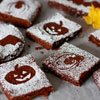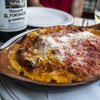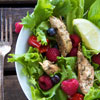In a medium saucepan, bring water, sea salt and brussel sprouts to a boil. Boil for about 10 minutes or until sprouts are fork tender. In another saucepan, heat the olive oil, garlic and green onions. Cook on medium to low heat for about five minutes, stirring frequently until the green onions are soft. Mix in the brussel sprouts, grapes and butter. Cover and simmer 15 minutes. Makes 4 servings.



